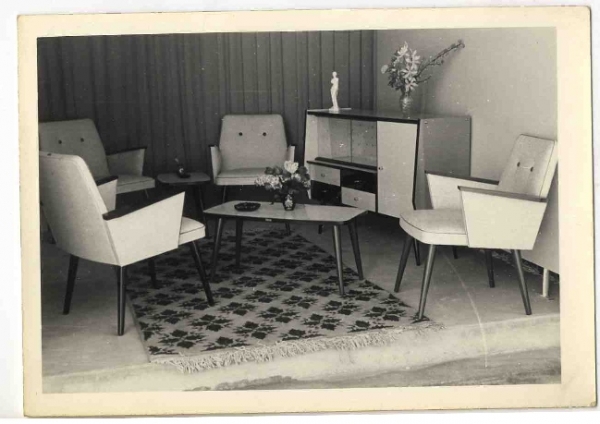HISTORICAL FURNITURES SMILE AT THE 21ST CENTURY

Turkey’s modern furniture history comes to light. The furniture, which we see on movies, or at our grandmothers’ houses that silently reflect history, is being traced by the lecturers at IUE Department of Interior Architecture and Environmental Design. The Project titled, “Understanding, Archiving, and Displaying the Modern Furniture Design in Turkey” holds the furniture that made it to present, which were built in 1930’s, 1950’s, and 1960’s Turkey, under the microscope. An exhibition and digital archive will be offered as part of the project where interested parties will get a chance to examine the constructions of the furniture.
The Project, which is led by Asst. Prof. Dr. Zeynep Tuna Ultav, Lecturer at Department of Interior Architecture and Environmental Design, and conducted by Asst. Prof. Dr. Deniz Hasırcı, Head of the Department, and Lecturer Tom Keogh, and Research Assistants Seren Borvalı and Hande Atmaca, aims to create awareness about “historical” furniture. The coordinator of the project Ultav said, “We are going to identify our studies with Architectural Cubism or Functional Architecture Period of 1930’s, and 20th century Turkey’s modern architecture history, which has been identified as Style Period of 1950’s and 1960’s. We are going to organize an exhibition, and we plan to print catalogues and establish a digital archive following the exhibition.”
Asst. Prof. Dr. Ultav stated that 15 pieces of unique and modern furniture would take place at the exhibition, and the organization would be completed within a year. She said that if the historical furniture were not preserved, it would not be possible to trace them. Ultav also stated that such a project would facilitate writing a history about the modern furniture of 20th century Turkey. Ultav said, “The Project will approach architecture and interior design on one hand, and changes over time in Turkish art on the other hand. It would be an important step to create awareness, preserve and analyse them. Lack of documentation created a huge gap for that specific period of furniture history. Using exhibition and digital archive at schools, and reaching out to other academicians through conferences and articles on international platform are also among the targeted goals of the project.”

















